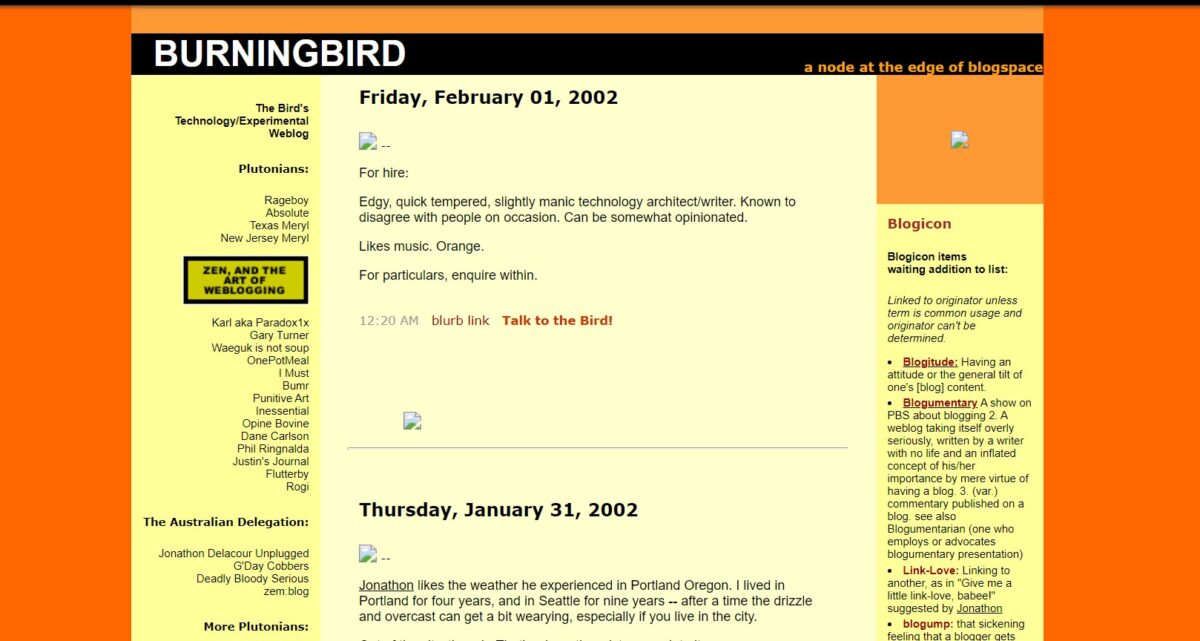I just published the last of the *recovered posts. I’ve manage to recover over 4000 posts. The last bit went faster than I expected, as I didn’t have as many posts to recover in later years.
I’ve not been chatty in this space in recent years. Months would go by before I’d write something to Burningbird. I spent more time on social media sites than I did my own space.
Elon Musk and his destruction of Twitter has been a good thing. It’s reminded us that we’re only renters in sites like Twitter and Facebook; renters at the sufferance of single overlords who could wipe out our existence on their sites with a single whim.
I have found Mastodon to be a superior offering, if for no other reason than you can pick your self up and move to another instance, or maintain your own instance, and have control over your own space. But you still don’t have permanence in Mastodon. Yes, you can move your follows and followers, and folks following you won’t even know you moved. But you can’t move your old posts.
And that’s right. Social media is intended to be today. It is now. It is a current spot where we can connect and discuss what happened today. You don’t freeze a street corner to keep alive a moment where you run into an old friend and have a great conversation. No, you will move on, your friend will move on, and that street corner becomes a place where someone else will run into an old (or new) friend.
If you want permanence, you need a home.
This is my home. This is Burningbird.
*With many, many thanks to the Internet Archive and its Wayback Machine.




